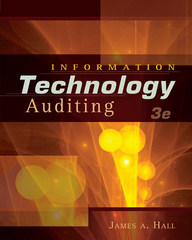Question
Pension plan data Defined benefit, noncontributory pension plan. Retirement benefits paid at year-end, with the first payment one year after retirement. Assumed discount (settlement) rate
Pension plan data Defined benefit, noncontributory pension plan. Retirement benefits paid at year-end, with the first payment one year after retirement. Assumed discount (settlement) rate is 6 percent. Benefits are defined by the following formula: Annual retirement benefit = .015 x n x Highest salary level where n equals the number of years of service that qualify for pension credit Data for a particular employee Retirement age of 62. Expected retirement period of 20 years. The only employee began working for the company at age 34. Various salary levels for the employee (actual and projected): Age Salary Level 34 $38,000 38 $42,000 39 $43,500 62 $87,000 1. Calculate the estimated annual retirement benefit at the time of retirement. 2. Calculate the projected benefit obligation (PBO) at the time of retirement. 3. Calculate the PBO at age 38, four years after the employee began working. 4. Calculate the accumulated benefit obligation (ABO) at age 38, four years after the employee began working. 5. Calculate the service cost and interest cost components of pension expense for years 1 and 2. 6. Calculate the pension expense for years 1 and 2, assuming $3,000 contributions to the pension fund at the end of each year. The expected and actual rate of return on the pension fund was 8%. 1. Calculate the PBO at age 39, five years after the employee began working. 2. Calculate the ABO at age 39, five years after the employee began working. 3. Calculate the service cost and interest cost components of pension expense for years 3 and 4. 4. Calculate pension expense for years 3 and 4, assuming $3,000 contributions to the pension fund at the end of each year and an 8% actual and expected rate of return on the plan assets. 5. Calculate the PBO balance at the end of years 3 and 4 by accumulating service cost and interest cost over the appropriate years, starting from year 1. 6. Calculate the plan asset balance at the end of years 3 and 4 by accumulating contributions and return on the pension fund over the appropriate years, starting from year 1. 7. Make the journal entries for years 1-4 to record pension expense and contributions to the pension fund. 8. Calculate the difference between the plan asset balance and the PBO at the end of year 3 and the end of year 4 (this difference is called funded status). 9. Verify that the change in the funded status from the end of year 3 to the end of year 4 equals the net of the year 4 pension expense and the year 4 cash contributions (from the year 4 journal entry in #7). 10. Using the journal entries prepared in #7, calculate the balance in the Pension-Related Asset/Liability account at the end of year 4 and verify that it equals the funded status at the end of year 4 (calculated in #8 above). [Note: Although this is true for this problem, it wont necessarily be true in general if the other potential components of pension expense, which we are not discussing, are included.] 11 Verify that the PBO at the end of year 4 (from #5 above) equals the PBO at the end of year 4 (from #3 in the in-class portion of this problem) within rounding error. Please show work, not just answers.
Step by Step Solution
There are 3 Steps involved in it
Step: 1

Get Instant Access to Expert-Tailored Solutions
See step-by-step solutions with expert insights and AI powered tools for academic success
Step: 2

Step: 3

Ace Your Homework with AI
Get the answers you need in no time with our AI-driven, step-by-step assistance
Get Started


